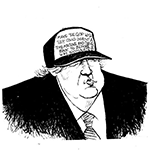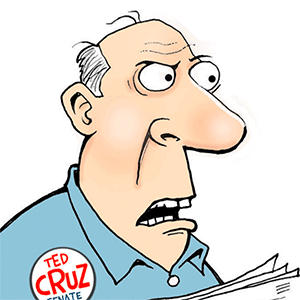John Romano: The first step in keeping the Rays in Tampa Bay is a Trop extension
Published in Baseball
ST. PETERSBURG, Fla. — All these years later, the Rays’ use agreement at Tropicana Field is 90% completed, and still there is no hint of a long-term stadium solution in sight for Tampa Bay.
There may, however, be a temporary solution. A tourniquet, if you will.
The Rays and St. Petersburg officials need to come together to discuss a short-term extension of the Trop lease.
This would look nothing like the 10-year extension the team proposed earlier this year with the team, the city and Pinellas County each contributing up to $250 million to refurbish the aging stadium.
Instead, this would more closely resemble the team’s one-year agreement at Steinbrenner Field this season.
For however many years they decide on — it could be two seasons, it could be five — the Rays would pay rent, the city would be responsible for the stadium’s upkeep, and the redevelopment of the property could begin on the eastern-most side of the vast parking area with the city reaping all of those profits under a new rights agreement.
What’s the rationale for the plan? It either buys time or solves problems for everyone involved.
For the city?
It lessens expenses incurred for the city’s contractual obligation to fix the Trop roof and bring the stadium back up to a major league-ready status after Hurricane Milton. Instead of losing tens of millions of dollars just to get the ballpark prepped for the next three seasons until the use agreement runs out, the city could recoup millions in rent payments while getting several more years of baseball traffic in downtown.
For the Rays?
It gives them a longer runway to decide the team’s future. Whether that means finding a new stadium deal in Tampa Bay or even planning a possible relocation elsewhere, there is no scenario where they would have a new stadium built by the time the use agreement ends. Without a Trop extension, the Rays would undoubtedly be looking at a temporary stadium situation in 2029, much like the Athletics today.
For aspiring ownership groups?
Same answer as above. Even if Stuart Sternberg sold to Tampa Bay buyers in the coming months — and nothing appears imminent — it could take years to secure land and funding for a new stadium, not to mention construction, and there would be a scramble for a temporary home.
For Major League Baseball?
It might theoretically satisfy commissioner Rob Manfred’s request that Sternberg establish a “go forward” plan. It would likely delay MLB’s hopes of a two-team expansion, but it could increase the odds that the Rays remain in Tampa Bay, which is Manfred’s stated preference.
It’s not a perfect solution. It doesn’t help the team’s revenue problems. It won’t magically fix the decades-long pursuit of a new stadium. And the Rays will likely balk at the idea of paying anything more than nominal rent — they’re supposedly paying the Yankees $10 million for the use of Steinbrenner Field but are banking on getting reimbursed through a business interruption insurance policy — so there are kinks that will need to be worked out.
But it could, in the long run, turn out to be profitable for the team. With everyone in baseball anticipating a work stoppage when the current collective bargaining agreement runs out before the 2027 season, it could have an effect on how much would-be owners are willing to pay for a franchise. By adding years to the lease, the Rays could see an increase in the team’s value once a new labor agreement is reached.
It also allows for tensions between the Rays and local politicians to dissipate. Time may not heal every wound, but future elections could change the makeup at city hall and in county offices.
And while St. Petersburg Mayor Ken Welch has shot down the idea of negotiating with Sternberg about a new stadium in St. Pete, a short lease extension would ensure the Rays remain in the city beyond a second Welch term, should he win reelection next year.
Aspiring ownership groups in Tampa Bay may not like the idea of taking the pressure off Sternberg to sell right away, but there are no indications that a quick sale is on the way. And without an extension, the Rays could be negotiating with other cities/buyers for a potential move in less than 40 months.
Manfred’s devotion to Tampa Bay will undoubtedly wane quickly if the city locks the Rays out of Tropicana Field and there is no full-sized stadium available here in 2029.
Yes, a short-term extension is only a temporary fix.
But, one way or another, it’s necessary for Tampa Bay to keep baseball. Whether Sternberg sells the team to local buyers tomorrow or still owns it in 2029, a lease extension at the Trop is still essential.
©2025 Tampa Bay Times. Visit tampabay.com. Distributed by Tribune Content Agency, LLC.










Comments